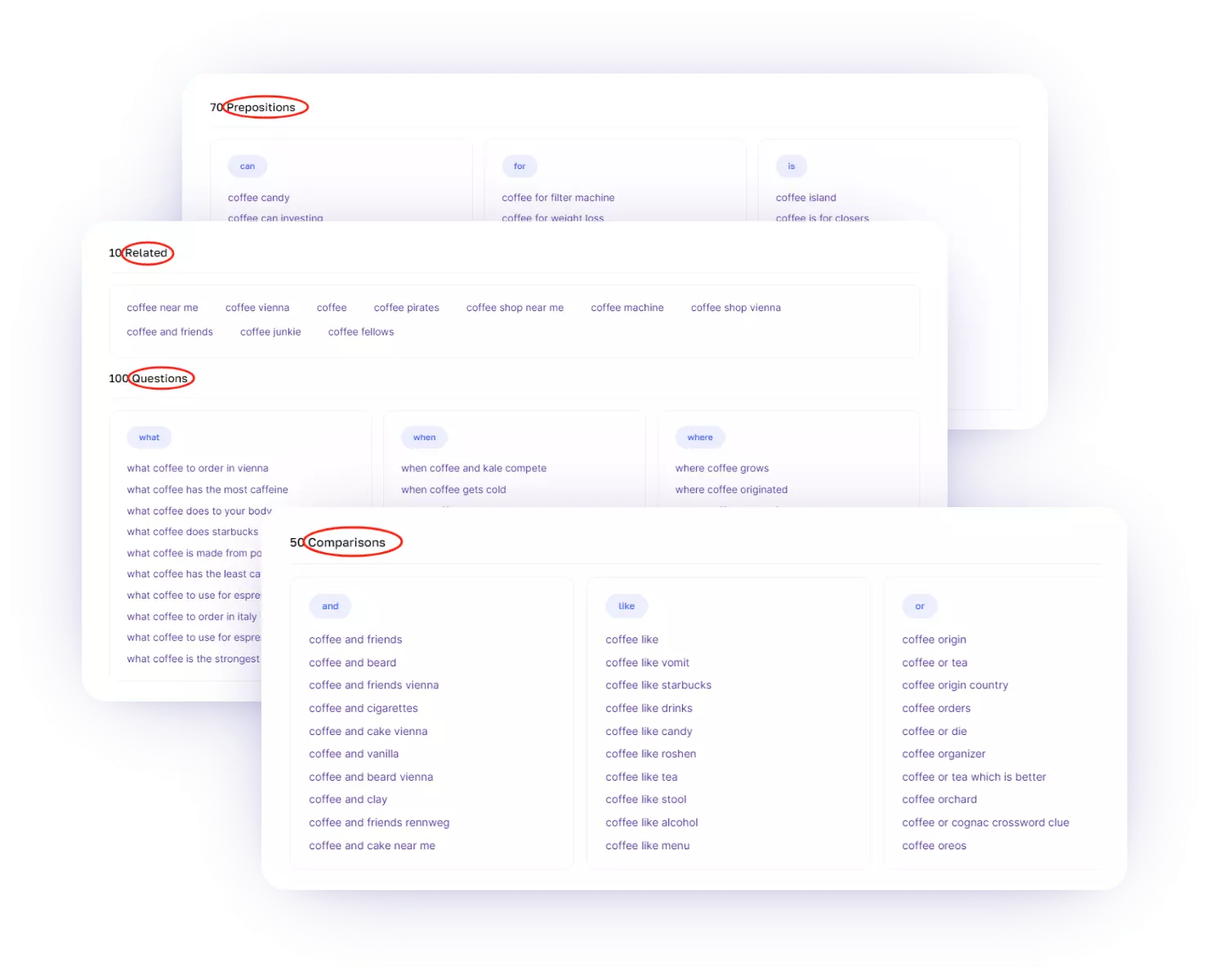
In the intricate world of Search Engine Optimization (SEO), one of the foundational strategies that can significantly impact your website's visibility is keyword mapping. But do you know what is keyword mapping exactly?
Keyword mapping involves the research and strategic planning of keywords and long-tail phrases to be incorporated into a website.
This comprehensive guide aims to demystify the concept of keyword mapping, exploring its importance, the process of implementation, and the positive effects it can have on your overall SEO strategy.
What is Keyword Mapping in SEO?
Keyword mapping is a strategic process in SEO that involves assigning specific keywords or phrases to individual pages on your website. The goal is to align the content of each page with targeted keywords that reflect the intent of potential users.
By creating a structured map of keywords to corresponding pages, you optimize your website for search engines, making it more accessible and relevant to users' queries.
How to Do Keyword Mapping? Step-By-Step
Mastering keyword mapping is a straightforward process once you grasp the methodology, albeit requiring some time for thorough research and implementation.
Here's a step-by-step guide on how to do keyword mapping:
1. Identify Your Keywords
Initiate the keyword mapping process by pinpointing the primary keyword for each page on your website. This keyword should serve as the solution to a specific user query. Commonly referred to as the seed keyword, it forms the foundation for uncovering a broader set of related keywords.
Utilize a reliable keyword research tool to expand your list of keywords based on the focus keyword. Additionally, explore keywords employed by your competitors and prioritize them according to your overall keyword strategy.
Niche Finder's Keywords Generate is one of the best keyword-generating tools, you can easily get hundreds of long-tail keywords in different categories:

2. Group Your Keywords
After compiling your list, organize the keywords into thematic groups based on search intent. The objective is to create clusters of words that collectively address a particular question. Designate one as the main keyword and the others as secondary keywords within each group.
Consider variations as you group keywords, ensuring a comprehensive approach. For instance, if optimizing for the focus keyword "[project management software]," also include variants like "[software for project management]." Simultaneously, contemplate potential URLs for pages, with the ideal URL featuring the main keyword.
3. Map Your Keywords
Build your keyword map by logically outlining the hierarchy of your site. Create subdirectories for individual pages, often facilitated by a well-organized spreadsheet with multiple columns. Use the primary keyword to formulate page titles, meta descriptions, header tags, and other crucial elements.
Include columns for existing titles, H1 tags, etc., if optimizing an existing site. Add recommendations or updated versions alongside them. Notes about body copy, word count, and images can be beneficial. Verify the uniqueness of each page within the spreadsheet.
4. Optimize Your On-Page Content
During the keyword mapping process, identify and address issues in your on-page content. These may include missing or irrelevant content, technical issues impacting ranking, internal linking opportunities, and multiple pages targeting the same query.
Optimization involves refining your content, ensuring its relevance and alignment with the mapped keywords. Address any technical hurdles that might hinder your ranking and explore opportunities for strategic internal linking.
5. Keep Working On Your Keyword Map
Recognize that keyword mapping is an ongoing process in the dynamic realm of SEO. Regularly revisit your map, at least annually or preferably monthly, to accommodate changes and expansions on your website. Use the map to prevent content duplication and ensure each page remains unique.
Stay attuned to shifts in technology, industry trends, and user behavior that may influence keyword relevancy.
Periodically update your keyword map to incorporate new or improved terms, adapting it to the evolving landscape of your website and the digital environment.
What Are the Benefits of Keyword Mapping?
Effective content marketing demands more than just crafting random blog posts or articles; it requires a strategic and organized approach tailored to your specific needs. Enter keyword mapping, a crucial component of the content creation process that offers a multitude of benefits:
Organized Keyword Structure
Keyword mapping serves as the linchpin of content organization. It goes beyond merely categorizing primary and supporting terms; it provides a structured layout, preventing inadvertent crossovers with other sections of your website. This meticulous organization ensures clarity and coherence in your content strategy.
Also Read: Why Is Keyword Research Important?
Prevention of Duplicate Content
A well-established keyword map instills clarity within your team, guiding them on the designated placement of topics based on coordinating keywords.
This, in turn, prevents the creation of content pieces that either duplicate a particular topic or vie for the same position in Search Engine Results Pages (SERPs), a phenomenon known as keyword cannibalization. In essence, keyword mapping eliminates redundant efforts without yielding tangible benefits.
Identification of Content Gaps
Ever found yourself realizing that you overlooked a significant topic despite posting a plethora of content on your website?
With a robust keyword map, such oversights become a thing of the past. The organized arrangement of various topics allows you to easily identify areas where gaps or deficiencies exist in your content marketing strategy.
Streamlined Communication of Content Expectations
Whether you engage an external copywriter or rely on an in-house team, a keyword map simplifies the communication of content expectations.
Knowing the main topic, primary keyword, and secondary keywords in advance ensures that drafts align more closely with the desired tone and structure. This proactive approach enhances the efficiency of content creation by providing a clear roadmap for all stakeholders involved.
Conclusion: What is Keyword Mapping
Regardless of what industry you're conducting search engine optimization, it's an arena marked by intense competition. In such a landscape, it becomes imperative to exploit every available advantage to position your page at the pinnacle of Search Engine Results Pages (SERPs).
Keyword mapping emerges as a highly effective strategy to amplify your efforts, providing a systematic means to organize all your content. This proactive approach safeguards against internal competition among your pages, ensuring a coherent and synchronized effort from your team.
While constructing a keyword map demands an initial investment of time, the dividends it pays include the prevention of conflicts and confusion down the line. Beyond averting potential headaches, a well-organized keyword map significantly contributes to enhanced search rankings, offering a comprehensive solution for optimizing your SEO endeavors.

